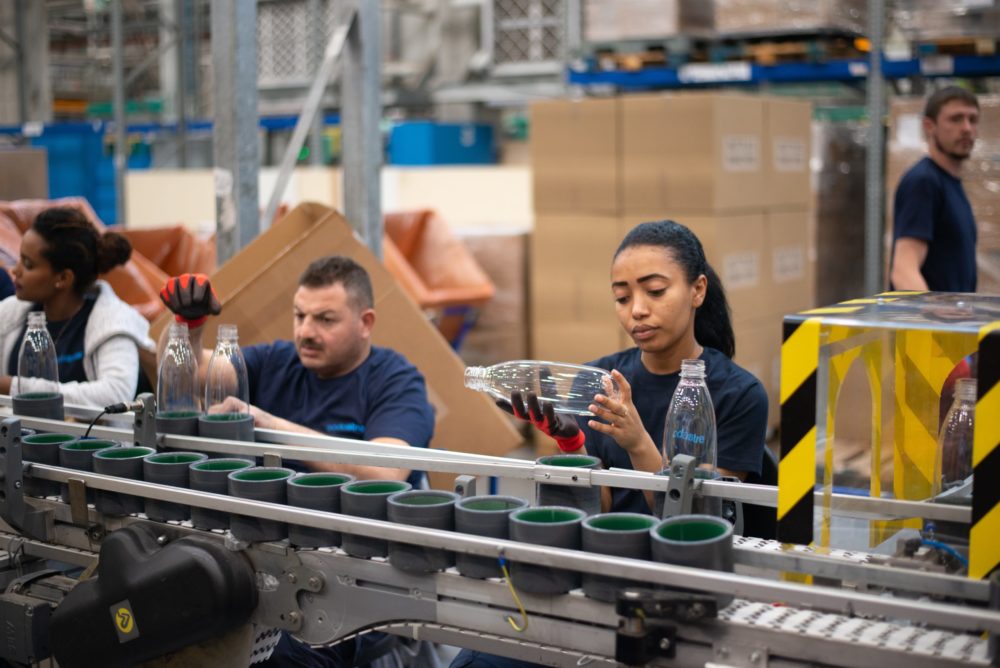Empathy is Key in Manufacturing

We’re living in uncertain times right now, and everything can feel unsteady, both in our personal lives and in our work, but when leaders show empathy at work it can make a world of difference.
For skilled workers in the age of COVID-19 dealing with fear, worry, and uncertainty, the added stress can wreak havoc on their health and well-being. How can your business help alleviate their concerns and remind them they are valued members of your team? Displaying a little empathy is a good place to start.
From analyzing feedback related to COVID-19, we know that workers have questions and concerns related to many aspects of their work and daily lives. Finding real and tangible ways to answer their questions and provide reassurance is crucial — and how you communicate messages in this time of crisis maybe even more important. The goal here is to make sure that the underlying tone of all your messaging is empathetic and calming.
But what exactly does that mean? Let’s break it down.
Defining Empathy
First things first: What is empathy? Empathy is the ability to understand and share the feelings of another.
While this seems similar to being “sympathetic,” it’s actually a little different. Having sympathy means that you are able to understand and support someone else with compassion. Empathy takes that one step further — you are actually experiencing and relating to the thoughts and emotions of another person.
The ability to be empathetic is important because it allows you to be more sensitive and understanding about the unique and specific needs of others. This can guide your decisions, as well as inform the ways you work with and talk with other people.
Empathy in the Workplace
Research has shown that the ability to have and display empathy is an important part of effective leadership. Being empathetic with employees often leads to a higher level of satisfaction and improved retention, since it creates a sense of appreciation and trust.
How does that translate to manufacturing companies — and the current times?
When you’re being empathetic, you are truly taking time to consider what your skilled workers are experiencing and using that knowledge to drive your business decisions and interactions. Because the very act of displaying empathy shows workers they are valued, it can help them navigate challenging times and frustrations.
What Empathy Might Look Like in Action
So, you know that empathy is important, but how can you put it into action? Letting empathy guide your actions and messaging doesn’t require grand gestures. Consider these examples:
- Explain the “why.” Workers are wondering why they’re being required to have their temperature checked when entering new sections of your facility or simply showing up at the beginning of a shift. Empathy is taking time to explain the why behind these and other precautions, relating it to the greater impact it could make, which helps workers understand the necessity of such actions and why they matter.
- Take time to educate. Workers may be concerned about their retirement accounts as the economy experiences fluctuations and uncertainty. Empathy is emphasizing that you understand these worries while sharing resources where they can obtain more information.
- Share details about shifts. Workers are concerned that they will arrive at work only to experience a delay or shutdown due to an infection. Empathy is taking these fears and concerns into consideration and enacting processes that help workers feel reassured that their jobs are secure and that they’ll be safe on-the-job.
- Communicate openly about health and sick leave policies, and be open to adapting. Workers are worried about their own health, some may be in a higher-risk population with chronic health conditions. Empathy is formulating policies about protective measures, health insurance, and sick leave and sharing those resources with workers.
The bottom line is that during this unique time, it’s important to always consider the needs and concerns of workers — whether you’re implementing a change, running the day-to-day operations of your business, or simply communicating with your team. A little empathy can go a long way.
Wondering about the specific concerns and questions your drivers have? Talk with an expert to learn how we can help.
Let's Build Better Workplaces Together
Revolutionize your company culture and your worker retention rates by improving communication and engagement.
Book a Demo

